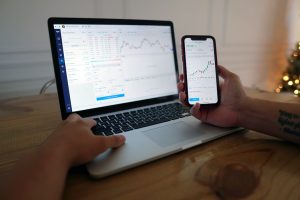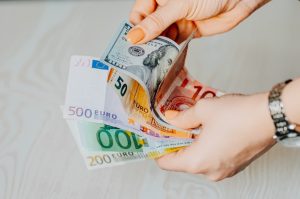Forex trading is a complex and dynamic financial market that involves the exchange of currencies from different parts of the world. In this market, traders aim to profit from the fluctuations in exchange rates by buying and selling currencies. To do this, traders often use leverage, which is the ability to control a large amount of money with a small amount of capital. One common ratio used in forex trading is 50:1. In this article, we will explain what 50:1 means in forex and how it affects traders.
What is Leverage?
Leverage is a financial tool that allows traders to control a large amount of money with a small amount of capital. It is a way to amplify the potential returns on investment. For example, if a trader uses a leverage ratio of 50:1, they can control $50,000 worth of currency with only $1,000 in their trading account. This means that if the exchange rate moves in their favor, they can make a larger profit than if they were trading with just their own capital.
However, leverage also amplifies the risks of trading. If the exchange rate moves against the trader, they can lose more money than if they were trading with just their own capital. This is why it is important for traders to use leverage carefully and to understand the risks involved.
What does 50:1 mean?
The ratio of 50:1 in forex trading means that a trader can control $50,000 worth of currency with only $1,000 in their trading account. This is because the broker provides the trader with leverage of 50 times their initial capital. In other words, the trader is borrowing $49,000 from the broker to trade with.
To understand how leverage works, let’s look at an example. Let’s say that a trader wants to buy 100,000 EUR/USD at an exchange rate of 1.1000. Without leverage, the trader would need to have $110,000 in their trading account to make this trade. However, with a leverage ratio of 50:1, the trader only needs to have $2,200 in their trading account (100,000 x 1.1000 / 50).
If the exchange rate moves in the trader’s favor and rises to 1.1200, the trader can sell their EUR/USD position and make a profit. Without leverage, the profit would be $2,000 (100,000 x 0.0200). However, with a leverage ratio of 50:1, the profit would be $100,000 (100,000 x 0.0200 x 50). This is because the trader is controlling a larger amount of currency with the same amount of capital, which amplifies the potential returns.
However, if the exchange rate moves against the trader and falls to 1.0900, the trader would lose money. Without leverage, the loss would be $2,000 (100,000 x 0.0100). However, with a leverage ratio of 50:1, the loss would be $100,000 (100,000 x 0.0100 x 50). This is because the trader is controlling a larger amount of currency with the same amount of capital, which amplifies the potential losses.
How does 50:1 affect traders?
The 50:1 leverage ratio can have a significant impact on traders. On one hand, it allows traders to control a larger amount of currency with a smaller amount of capital, which can amplify potential returns. This can be especially useful for traders who are looking to make quick profits in a short amount of time.
On the other hand, the 50:1 leverage ratio also amplifies potential losses. This means that traders who use this ratio must be careful and manage their risk properly. They should only risk a small percentage of their trading account on each trade and use stop-loss orders to limit their losses.
In addition, traders who use the 50:1 leverage ratio should have a solid understanding of the forex market and be able to analyze market trends and news events. This is because the forex market is highly volatile and can be affected by a wide range of factors, including economic data releases, geopolitical events, and central bank announcements.
Conclusion
In conclusion, the 50:1 leverage ratio is a common ratio used in forex trading that allows traders to control a larger amount of currency with a smaller amount of capital. While this can amplify potential returns, it also amplifies potential losses, so traders must manage their risk carefully. Traders who use this ratio should have a solid understanding of the forex market and be able to analyze market trends and news events.





